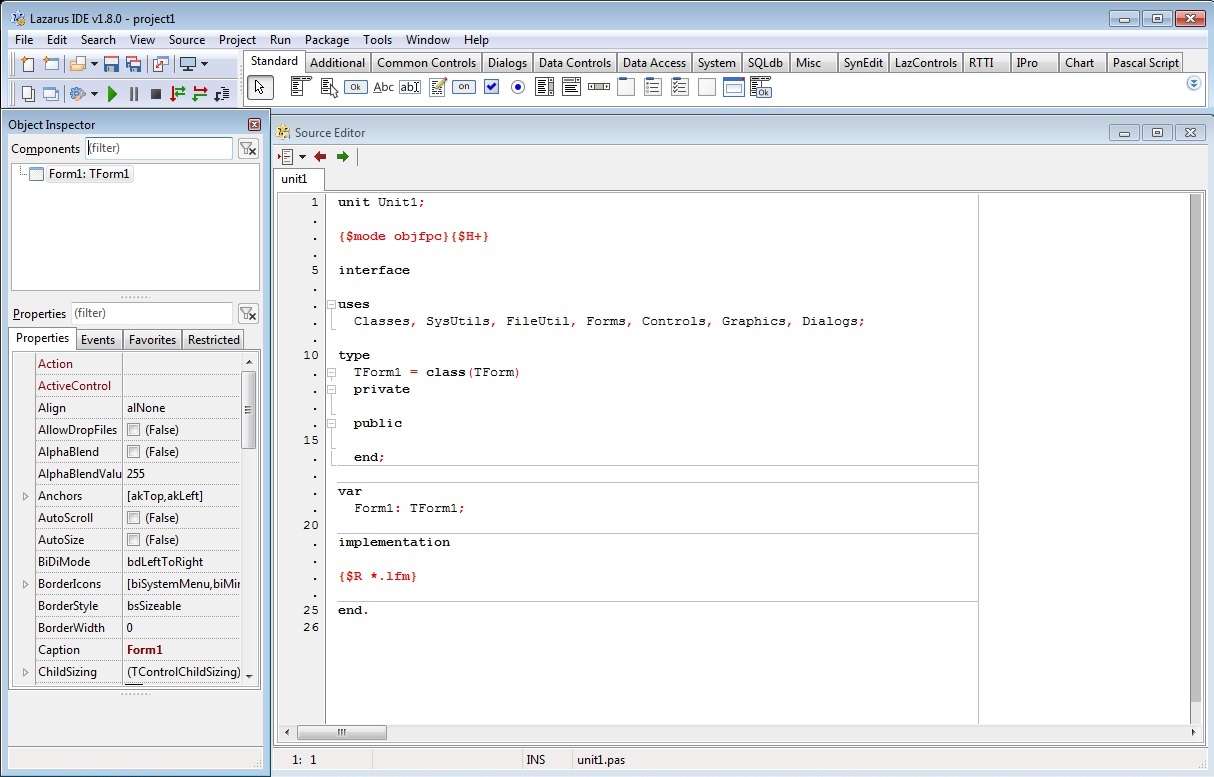
I had the great advantage of having the existing Templot program to convert to Delphi, and I could therefore ignore all the stuff I didn't need.īear in mind that Delphi is primarily intended for corporate and business applications which display a lot of text and text entry boxes, and reference the data in a complex database structure. It can be very slow at the start because there is almost too much to take in, and you have nothing but a blank screen in front of you. Progress is slow, I'm afraid, but when I get something to work it gives a sense of achievement that I must admit is a little addictive.ĭerekStuart wrote: Progress is slow, I'm afraid, but when I get something to work it gives a sense of achievement that I must admit is a little addictive.Hi Derek, I've just opened and immediately found a good looking beginners guide in PDF- exactly what I was looking for (I've also ordered a couple of books from Waterstones too). As it's something where I can easily look at existing code, it seems logical to stick with it. Opinion on languages is, as usual, divisive, but it seems that Pascal and its derivatives are generally well respected. No doubt they will be pushing Delphi rather than Lazarus, but the basics are the same and the content there is released under Creative Commons. However, Templot3 is staying in Lazarus - unless or until someone other than me tries porting it elsewhere.Įmbarcadero have just launched a new site for learning Delphi and Pascal: Leading to lots of quoting errors.īut I don't think you should take too much notice of what I think - I'm a bit set in my ways these days. Working in Javascript drives me nuts when I can never be quite sure whether I'm dealing with an integer, a float, a string, an array, or whatever. After all this time wedded to Pascal I doubt I would find them any more appealing now.
#Lazarus multiple lfm to one pas windows#
Yes, I think I would still choose Pascal.Ģ0+ years ago before starting to port Templot to the Windows OS I did try a couple of other languages (Visual Basic and C), and didn't feel comfortable with either of them.

#Lazarus multiple lfm to one pas full#
If you were starting programming Templot from scratch now, would you still use a Pascal-based language? The internet is full of people with very definite opinions either way.ĭerekStuart wrote: If you were starting programming Templot from scratch now, would you still use a Pascal-based language? The internet is full of people with very definite opinions either way.Hi Derek, I really don't want to bother you with questions, but if I could ask one in order to point me in the right direction. (The files uGreen.pas and uBlue.pas are very similar to uRed.pas and the forms uGreen.lfm and uBlue.lfm are very similar to uRed.lfm).Click member name to view archived images view images in gallery view images as slides URed.lfm object frmRed : TfrmRed Left = 795 Height = 240 Top = 270 Width = 320 Caption = 'Red Form' ClientHeight = 240 ClientWidth = 320 Color = clRed LCLVersion = '0.9.30' object btnMenu : TButton Left = 16 Height = 25 Top = 16 Width = 75 Caption = 'Menu' OnClick = btnMenuClick TabOrder = 0 end end btnMenuClick ( Sender : TObject ) begin hide frmMenu.

UMenu.pas unit uMenu interface uses Classes, SysUtils, FileUtil, Forms, Controls, Graphics, Dialogs, StdCtrls type TfrmMenu = class ( TForm ) btnRed : TButton btnGreen : TButton btnBlue : TButton procedure btnBlueClick ( Sender : TObject ) procedure btnGreenClick ( Sender : TObject ) procedure btnRedClick ( Sender : TObject ) end var frmMenu : TfrmMenu implementation uses uMenu procedure TfrmRed. CreateForm ( TfrmBlue, frmBlue ) Application. CreateForm ( TfrmGreen, frmGreen ) Application.

CreateForm ( TfrmRed, frmRed ) Application. CreateForm ( TfrmMenu, frmMenu ) Application. Project file MenuDemo.lpr program MenuDemo uses Interfaces, Forms, uMenu, uRed, uGreen, uBlue begin Application. We show below the contents of MenuDemo.lpr, uMenu.pas, uMenu.lfm, uRed.pas and uRed.lfm.


 0 kommentar(er)
0 kommentar(er)
